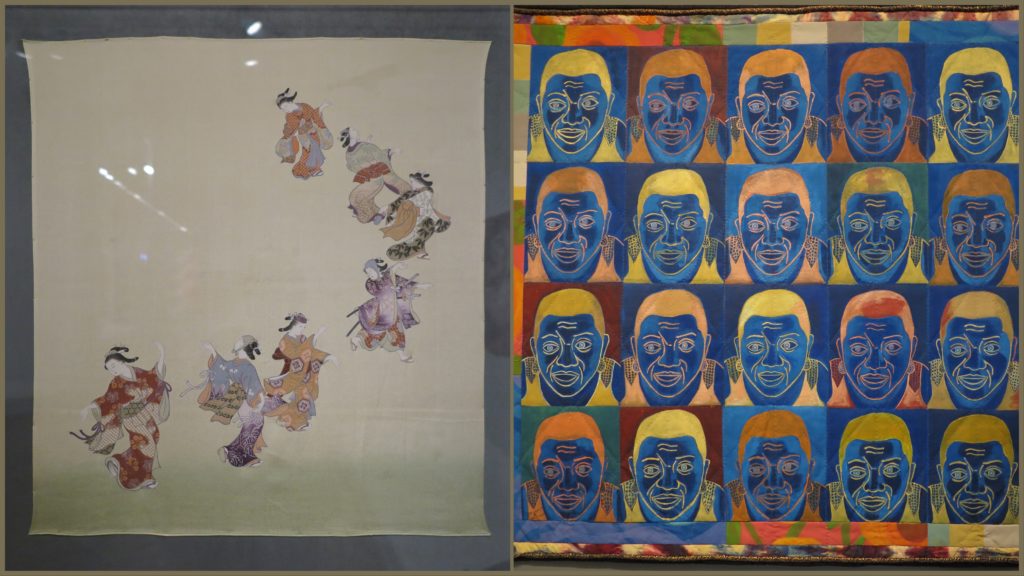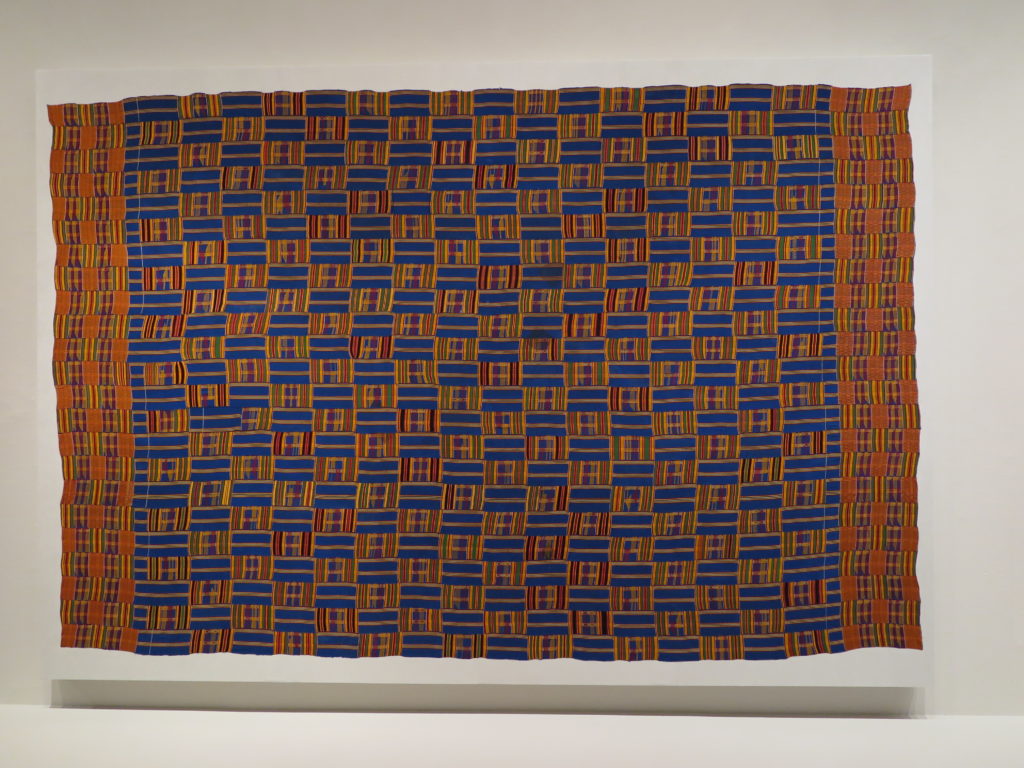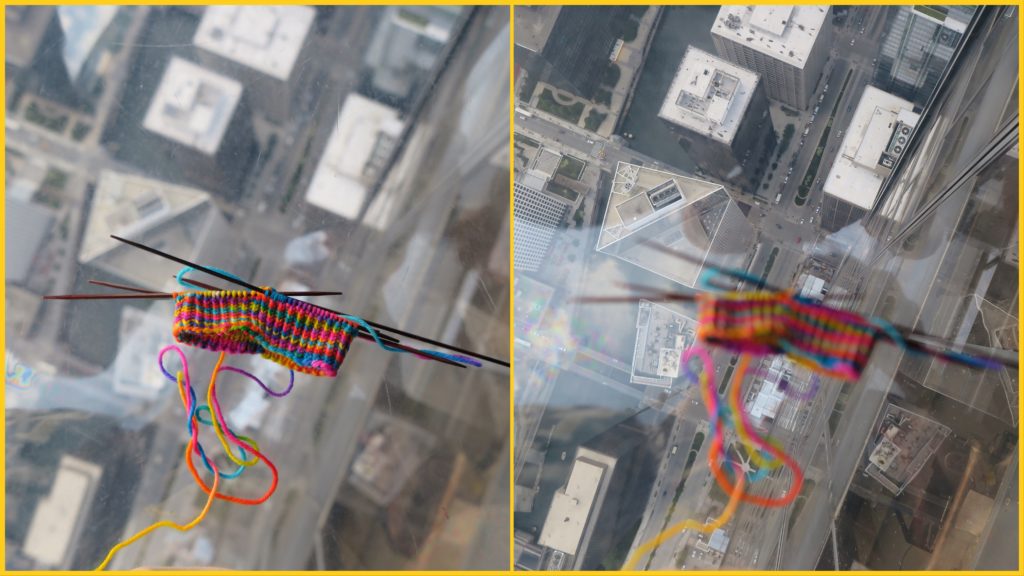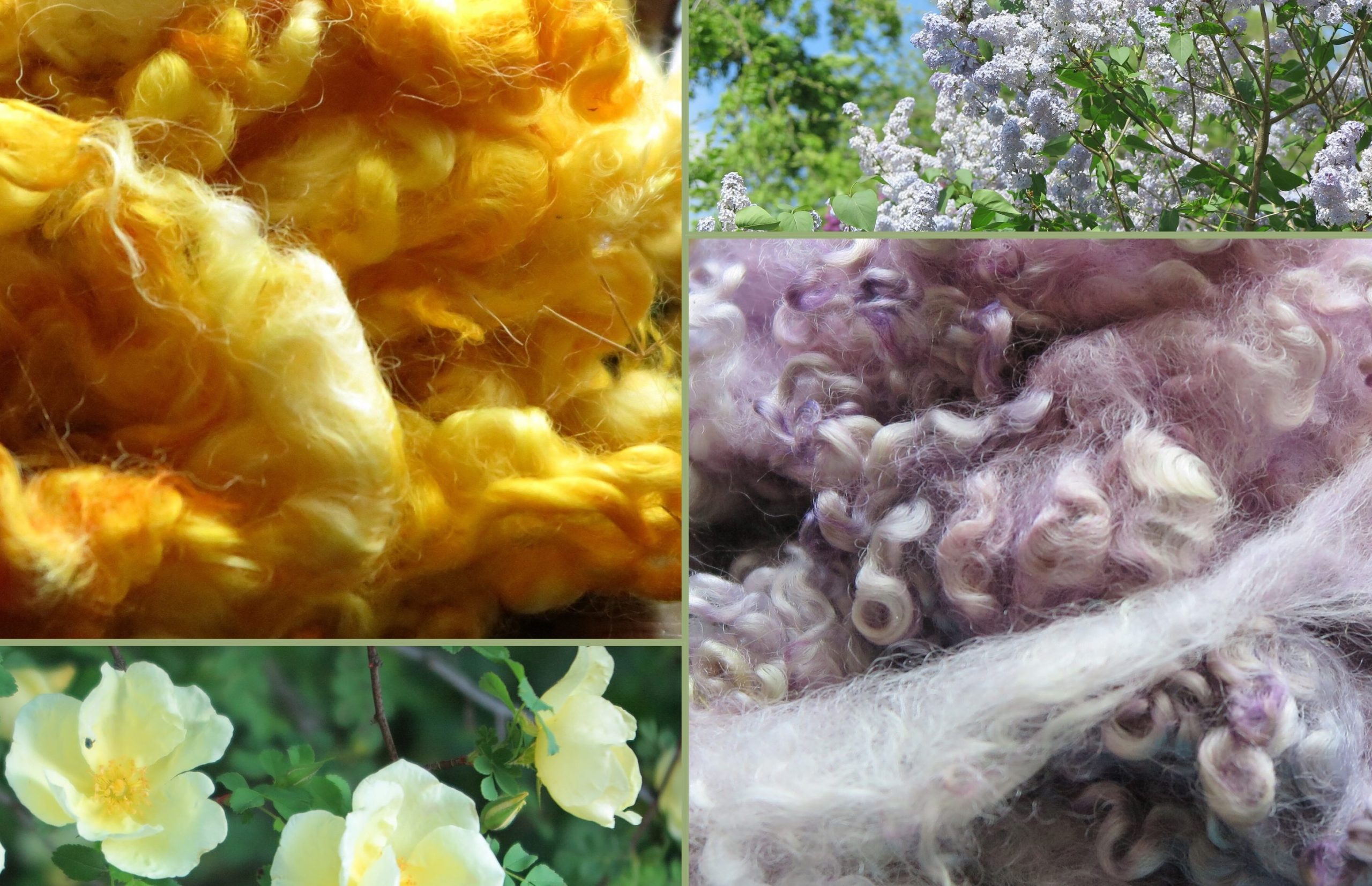Our last museum stop on Tuesday was the Chicago Art Institute. As I was feeling pretty museumed-out, I headed straight for the one wing and exhibit I was interested in – the Textile wing with it’s special exhibit “Music and Movement: Rhythm in Textile Design,” which is frankly buried in the basement of the museum.
How buried? I walked in and a museum guard felt the need to tell me there was no exit, assuming I was looking to pass through on my way to something else.
Before you get to the special exhibit, there is an Islamic textiles exhibit which includes some gorgeous 19th century dress fabrics from Iran.

Those on the left are from Iran and made of silk and cotton. The top uses weft-faced patterning and the bottom is embroidered (I’m not a weaver, but they were labeled!). On the right is a British manufactured cloth with a printed design. The designer was William Morris. It did make me think how we have the name of the designer who was inspired by and “appreciated” Islamic designs, but not the names of any of the (contemporary) Islamic designers who created and executed the amazing textiles on display.
From there I moved into the special exhibit.

The above is needlework showing people with instruments from the late 17th century and is either Portuguese or English. I love all the texture in it. It’s made of linen, silk, metal thread, pearls and mirrors. I took a close up of the people so you can see the mirrors along their clothing. The way the thread is embroidered on for the trees makes them look three dimensional. It’s a much more layered piece than typically comes to my mind when I hear “needlework”.

The exhibit covered a lot of different times an places. On the left is a Japanese gift wrapping cloth from the early Showa period (likely between 1926-1935) stenciled and resist dyed. I think the perspective that’s conveyed of dancers moving away without any background, but just with the size and positions of the people is pretty amazing.
On the right is “Bessie’s Blues”, a quilt by Faith Ringgold. Made in 1997 it depicts Bessie Smith, a blue’s singer. They actually had her songs playing in the exhibit gallery, which I thought was pretty cool.

The above textile, a Kente Wrapper from Asante Ghana, was my favorite. It dates to 1900-1950 and is made up of thin woven strips pieced together. According to the sign, the weavers typically sing while weaving. Even without this overt connection to music, I think you can see rythm in the fabric. I love how, if you look closely, you see how the supplementary weft and brocaded patterning in each square differs just a little from those around it.
It had been a packed two days, so I was pretty content to just sit and look at this one for a while. Well, until my quiet contemplations were interrupted by a woman who walked in front of me stating as she did “you can buy lots of that in the African market”. I was honestly too tired and mentally sluggish to ask her more about what exactly she meant by her statement. There was something in her tone that suggested what she meant was “This really isn’t that special and I don’t get why it’s here since I can buy something that looks like it easily.” I don’t know where this market is, and have not been to it, so I can’t say whether or not the fabrics there are really the same or are a simplified kente wrapper style fabric for cheap mass production. I can say that none of that has any bearing to my mind about whether or not it’s valid that the above Kente Wrapper is a legitimate museum piece.
Finally, since this is my last post on Chicago, a couple other images:

This is The Bean. My sister was adament that we couldn’t leave Chicago without seeing this, and it was as cool as promised.

And this is the skydeck from the Willis Tower. There’s a bit of a line, so I was happy to have some knitting with me.
